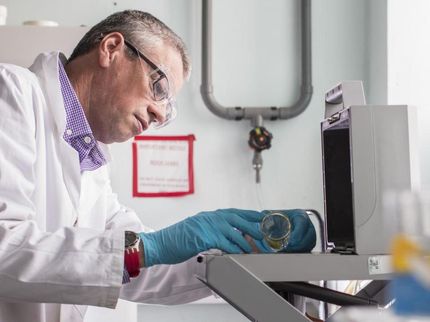Real-life CSI: What can investigators really tell from gunshot residue?
The popular TV series "CSI" is fiction, but every day, real-life investigators and forensic scientists collect and analyze evidence to determine what happened at crime scenes. In a study published in the ACS journal Analytical Chemistry, scientists say they have developed a more rapid and accurate method that could allow crime scene investigators to tell what kind of ammunition was shot from a gun based on the residue it left behind.
Igor K. Lednev and Justin Bueno point out that when someone fires a gun, burnt particles from the bullet spray out of the weapon onto a shooter's hand, clothes, furniture and other surfaces nearby. The presence or absence of that residue says whether a gun was discharged and — based on its location on clothing and other surfaces — who and what was near the weapon when it was fired. But current analysis methods can only re-create a crime scene story in hazy detail. The most widely used technique today specializes in detecting the heavy metals that some ammunition contains. Newer bullets, however, aren't necessarily made with heavy metals, making analyses much more difficult. Also, existing methods require expensive equipment and a lot of time, luxuries law enforcement can't afford. To bring real-life CSI closer to what's hyped on TV, Lednev's team set out to find a new way to trace the ammunition used in a crime.
They developed a novel approach to improve gunshot residue "fingerprinting" that can rapidly detect a wider range of particles than existing methods. "Therefore the ability to detect these chemicals may indicate that a specific ammunition brand was discharged (or was not) during a shooting incident," the researchers state, adding that their work could also have applications in the fields of homeland security and counter-terrorism.
Most read news
Other news from the department science

Get the analytics and lab tech industry in your inbox
By submitting this form you agree that LUMITOS AG will send you the newsletter(s) selected above by email. Your data will not be passed on to third parties. Your data will be stored and processed in accordance with our data protection regulations. LUMITOS may contact you by email for the purpose of advertising or market and opinion surveys. You can revoke your consent at any time without giving reasons to LUMITOS AG, Ernst-Augustin-Str. 2, 12489 Berlin, Germany or by e-mail at revoke@lumitos.com with effect for the future. In addition, each email contains a link to unsubscribe from the corresponding newsletter.























































